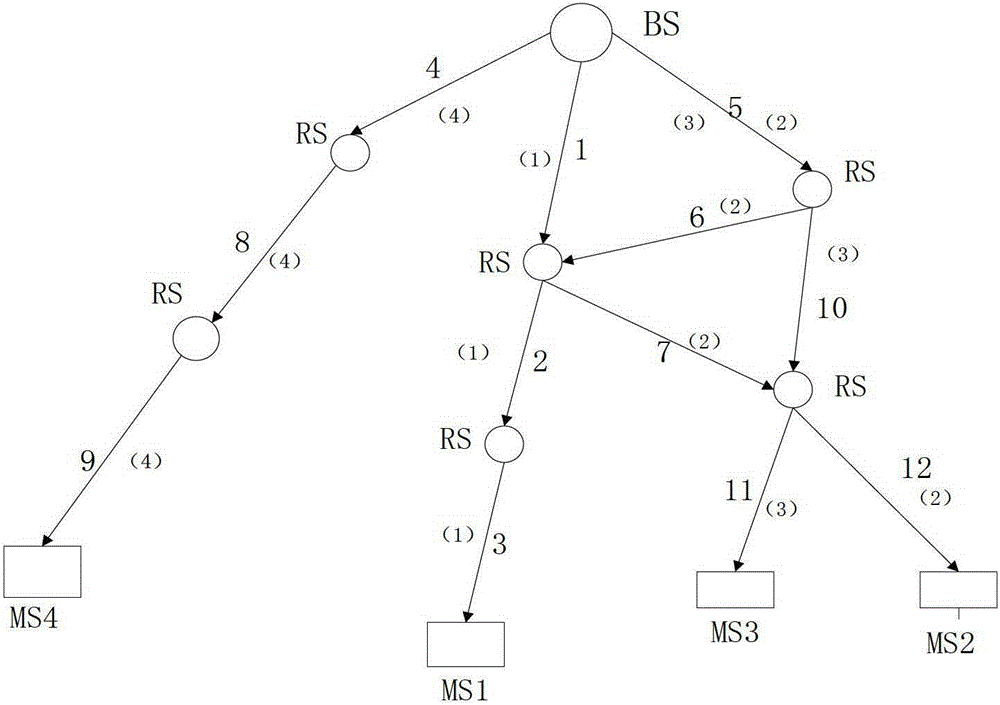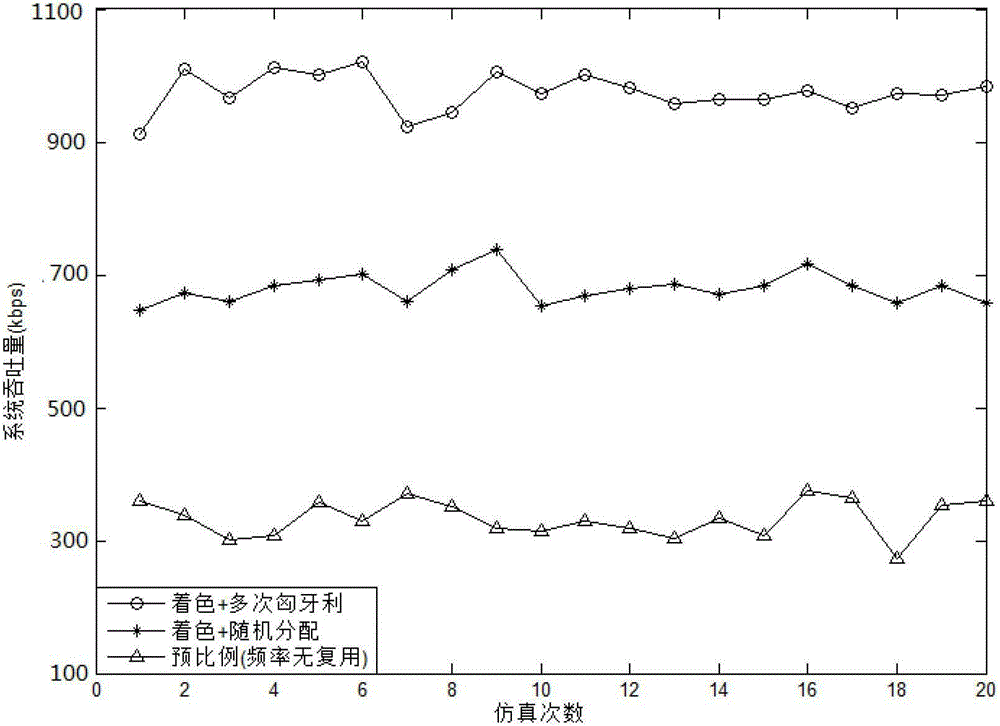Graph Theory-Based Resource Allocation Method for Ofdma Wireless Multi-Hop Network
A wireless multi-hop and resource allocation technology, applied in the field of communication, can solve the problems of increasing computational complexity, not considering the frequency reuse and co-frequency interference of multi-hop systems, resource consumption, etc., and achieve the effect of reducing interference problems
- Summary
- Abstract
- Description
- Claims
- Application Information
AI Technical Summary
Problems solved by technology
Method used
Image
Examples
Embodiment Construction
[0030] refer to figure 1 , the implementation steps of the present invention are as follows:
[0031] Step 1, generate a topology map based on OFDMA wireless multi-hop network according to nodes and links.
[0032] In this example, a wireless multi-hop network topology diagram is generated by 1 base station, 6 relay stations, 4 mobile terminals and 12 links. The base station is connected to the relay station through the link, and the relay station is connected to the mobile terminal through the link. The business flow Transmitted on the link, the generated topology is as follows figure 2 shown;
[0033] according to figure 2 The network topology diagram and business flow, the generated business routing matrix R is as follows:
[0034] R = 1 1 1 0 0 ...
PUM
 Login to View More
Login to View More Abstract
Description
Claims
Application Information
 Login to View More
Login to View More - Generate Ideas
- Intellectual Property
- Life Sciences
- Materials
- Tech Scout
- Unparalleled Data Quality
- Higher Quality Content
- 60% Fewer Hallucinations
Browse by: Latest US Patents, China's latest patents, Technical Efficacy Thesaurus, Application Domain, Technology Topic, Popular Technical Reports.
© 2025 PatSnap. All rights reserved.Legal|Privacy policy|Modern Slavery Act Transparency Statement|Sitemap|About US| Contact US: help@patsnap.com



